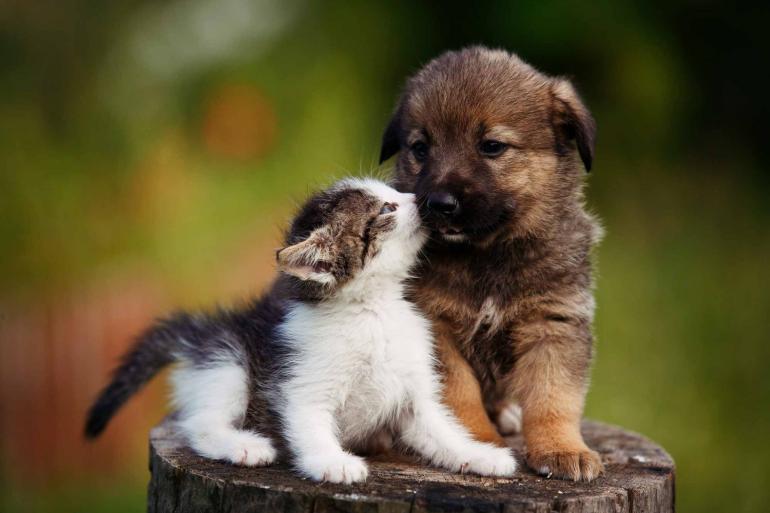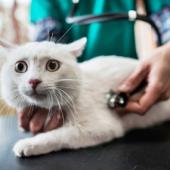Kitten Socialization: Nurturing Happy, Confident Cats

Socializing kittens is very important because it helps them get used to living with other cats. Kittens that have been socialized well are more likely to form strong bonds with their owners and other animals in the house. They will also be able to handle changes in their surroundings without getting upset. This is good for the cat's health and the way it gets along with its owner and other dogs in the house for the rest of its life. Kittens that haven't been socialized are much less likely to be able to live in a home. Always ask the owner how they've socialized their kittens before you get one.
Socialization is a crucial aspect of a kitten's early development. It sets the foundation for a confident, well-adjusted cat that can thrive in various environments and interact positively with humans and other animals. Here's a comprehensive guide to understanding and implementing effective kitten socialization.
What is Kitten Socialization?
Kitten socialization is the process of exposing young kittens to a wide range of positive experiences, people, environments, and other animals in a controlled and safe manner. This helps them build confidence, adaptability, and a strong foundation for future interactions.
The Importance of Kitten Socialization
1. Builds Confidence:
Proper socialization helps kittens feel secure in new environments and around different people and animals.
2. Reduces Fear and Aggression:
Well-socialized kittens are less likely to exhibit fear-based behaviors or aggression towards humans or other animals.
3. Encourages Exploration:
Socialized kittens are more curious and open to exploring new environments, which helps them adapt to changes in their surroundings.
4. Eases Veterinary Visits:
A well-socialized kitten is more likely to be comfortable with handling and veterinary care, reducing stress during check-ups.
5. Promotes Healthy Relationships:
Socialization prepares kittens for positive interactions with other pets, making multi-pet households more harmonious.
Kitten Socialization Techniques
1. Early Handling:
Begin gentle handling from a very young age. This includes picking up and holding the kitten, touching their paws, ears, and tail, and gently restraining them.
2. Positive Exposure to Various Environments:
Gradually introduce kittens to different environments within your home. Allow them to explore rooms, experience various textures, and encounter different surfaces.
3. Introduce Different People:
Expose kittens to a variety of people, including children, adults, and individuals with different appearances and voices. Ensure that interactions are calm and positive.
4. Meet Other Animals:
If you have other pets, introduce them to the kitten in a controlled environment. Monitor their interactions to ensure they are positive and gradually increase the time they spend together.
5. Provide Enrichment and Toys:
Offer a variety of toys to stimulate mental and physical development. Interactive toys encourage problem-solving and keep kittens engaged.
6. Positive Reinforcement:
Reward good behavior with treats, praise, and affection. This creates positive associations with new experiences and people.
7. Expose to Different Sounds:
Gradually introduce kittens to various household sounds, such as vacuum cleaners, doorbells, and other common noises. This helps desensitize them to potentially frightening sounds.
8. Expose to Different Surfaces:
Allow kittens to walk on different textures like carpet, tile, and grass. This helps them become comfortable with various surfaces they may encounter.
When should a kitten meet new people?
From about two weeks old to about seven weeks old, kittens are in their "sensitive period." This is the time when they are most open to learning new things and making friends with people or other animals. Cats don't start to feel scared until they are about six weeks old. Before that, they are very curious and open to everything new. Because of this, it is very important to start socializing the kittens when they are two weeks old.
Cats aren't naturally social, but many pet cats are. For this reason, it's important to handle cats early on by different types of people if you want them to be nice and interactive. A cat's genetics also affect how social or friendly it is with people. Feral kittens that are fostered after the seven-week socialization window may never get used to living in a home and would be better off going back to their feral community. It is always a good idea for people who want to get a kitten to see the parents first. Kittens whose parents are bold and sure of themselves are more likely to be confident around people.
How can a cat get used to being around people?
When kittens are two weeks old, you should start to handle them. You should touch all of the kittens while their mother and littermates are around. At first, the queen should only let people she knows and feels comfortable around touch the kittens. This way, the kittens will know that their mother is not upset about the process. Give the queen some attention or a treat to keep her busy so she is happy while the kittens are being handled carefully. Kittens whose moms are scared or anxious around people are more likely to be upset when they see people. If the queen gets angry when people are around, extra care should be taken and the handling should happen away from the queen.
People who handle kittens should always wash their hands, and the kittens should be handled safely, with the person kneeling down so that the kittens are as close to the ground as possible. Try not to stand too close to the kitten if you can help it. This can be scary for them.
Handling should start out slowly and for short amounts of time (a couple of minutes). This will give each kitten time to get used to being touched gently and then put back with its littermates. Start by gently touching or rubbing the kitten's head, chin, and back. Then move on to the rest of the body, keeping a close eye out for any signs that the kitten isn't happy. If the kitten seems upset in any way, stop. Handling the kittens gently is very important because it will help them learn that being touched is a good thing. Always speak in a soft voice to comfort the kittens and make them feel at ease when you touch them. Do not hit or rough-house the kitten to "teach" it a lesson; it will not work and could make the kitten scared or mean.
The queen and kittens should be happy and not be bothered too much during handling, which can last 30 to 40 minutes a day, but not more than an hour a day. If necessary, this can be split into two sessions. Kittens can be gently touched in more sensitive places like the ears, paws, mouth, and tail near the end of the socialization time. This will be similar to how they are checked out at the vet's office, which will make the checkups easier on the cat and less stressful for the vet staff.
At least four different people should touch the kittens while they are getting used to other people. Studies have shown that this can help kittens get used to meeting new people as they get bigger. People of different ages, genders, and races should try to be there so the kittens can get used to a wide range of people.
It has been shown in studies that touching kittens up until they are nine weeks old makes them even friendlier.
Getting kittens used to other cats and animals
It is important to socialize kittens that are going to live with other cats or dogs in the house. If you don't socialize your kittens with other cats, they are much more likely to act badly around other cats as adults. Kittens should stay with their siblings for this reason alone, since they continue to learn how to behave around other people after the sensitive time is over. Kittens should stay with their litter mates until they are about 12 weeks old so they can learn how to get along with other cats.
Beginning around six weeks of age, babies can be around calm, friendly dogs or cats. At first, a clean cloth is used to gather some of the other cat or dog's smell. The kitten can then check out the fabric, and giving it treats or toys at the same time will help it make a good connection with the smell. Visitors' cats should be kept in a cat box while the kitten looks around, and dogs should be on a leash the whole time. It is important to remember that these meetings should be fun, so extra care should be taken to make sure the kittens don't get scared or startled. When babies meet a dog or cat they don't know for the first time, a slow, staged approach is less likely to scare them.
How do I get my cat used to the things I have?
While they are getting to know each other, kittens can be given brushes, collars, litter trays, nail clippers, and food puzzles. One of these things should be introduced at a time, and the cat should not be given a new one until it is comfortable with the one it already has. Let the kittens get used to the things by letting them smell, hear, see, and touch them. Leaving the toys with the litter will make the kittens who are more sure of themselves start exploring them, and it will also make the kittens who are less sure of themselves want to join in.
How do cats get used to living with people?
During the juvenile period, which lasts from about nine weeks to six months, a kitten's growth is also very important. During this time, kittens can get used to other things, like the sounds of home appliances like the washing machine or vacuum cleaner, or the new floors or furniture they see, smell, or touch. Kittens can easily get used to these things in a good way if they are raised in a home setting instead of a sterile breeding cattery. The kittens can keep doing this even after they move in with their new owners. Kittens should keep having good experiences with:
- Textures: You should give cats things that are different sizes, shapes, and textures to play with on their own time. You can give them different types of floors to walk on, but kittens shouldn't be made to do this. To get the kitten to explore more and make a good connection with new things, parents can give it treats or play with it in or around them.
- Sounds: Kitty socialization sounds can be found online and downloaded to help get kittens used to normal home sounds. At first, these sounds should be played in the background at a low volume. Over time, the volume should be turned up. If sounds are played too quickly and at too high of a volume, kittens might get scared.
- Cat food: Kittens should try both dry and wet food to get used to the different tastes and textures. If you only feed your kittens one type of food, they might not want to eat another type of food as an adult. Cats need to change what they eat sometimes for health reasons, which can be hard to do if they only like one kind of food. But if you want to avoid stomach problems and food allergies, you should make any changes to your diet slowly (over 7–14 days).
Conclusion
Kitten socialization is a vital step in fostering a happy, well-adjusted cat. With patience, positive reinforcement, and careful exposure to new experiences, you can help your kitten develop the confidence and adaptability they need to thrive in their new environment. Remember to go at the kitten's pace and create positive associations with every new encounter.
Kittens are only open to new things for a short time, about three months. This means that socialization must be done right the first time. Cats that don't get along with others well may have trouble changing for the rest of their lives. Get help from your vet if you need suggestions on how to socialize your kitten.




